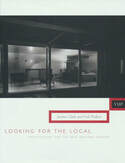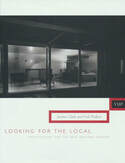
Dorset Street Flats and English New Brutalism.
Lyall Holmes was also involved in the engineering of Miles Warren’s Dorset Street Flats, one of the best-known New Zealand buildings of the 50s (pp. 132-3). With its exposed concrete beams and concrete block walls, this was to form the prototype for a whole school of Christchurch architecture in the 60s. The connections of this work, and the similar architecture explored by [Ivan] Juriss and others, with English New Brutalist work is well acknowledged. But the effect in New Zealand, if any, of the concept of ‘image’ in the English arguments for Brutalism (again played out in The Architectural Review), and the evolution of that idea from the emphasis on coherence of plan to a more elusive and abstract topological consistency has not been given any attention. Perhaps New Brutalism’s direct attitude to materials was indeed all that was taken up locally, as it was already such a strong commitment in the new New Zealand architecture. But it should be noted that in the hands of Warren and Mahoney and Peter Beaven this would be developed into an architecture which could also be used to make dramatic and exciting institutional buildings.
JUSTINE CLARK AND PAUL WALKER, “Looking For The Local: Architecture And The New Zealand Modern”, Victoria University Press, 2000. ISBN 0 86473 387 9, pp 53-54, 132-133.
Lyall Holmes was also involved in the engineering of Miles Warren’s Dorset Street Flats, one of the best-known New Zealand buildings of the 50s (pp. 132-3). With its exposed concrete beams and concrete block walls, this was to form the prototype for a whole school of Christchurch architecture in the 60s. The connections of this work, and the similar architecture explored by [Ivan] Juriss and others, with English New Brutalist work is well acknowledged. But the effect in New Zealand, if any, of the concept of ‘image’ in the English arguments for Brutalism (again played out in The Architectural Review), and the evolution of that idea from the emphasis on coherence of plan to a more elusive and abstract topological consistency has not been given any attention. Perhaps New Brutalism’s direct attitude to materials was indeed all that was taken up locally, as it was already such a strong commitment in the new New Zealand architecture. But it should be noted that in the hands of Warren and Mahoney and Peter Beaven this would be developed into an architecture which could also be used to make dramatic and exciting institutional buildings.
JUSTINE CLARK AND PAUL WALKER, “Looking For The Local: Architecture And The New Zealand Modern”, Victoria University Press, 2000. ISBN 0 86473 387 9, pp 53-54, 132-133.

